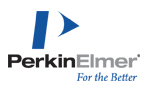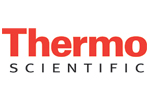08:00 | Registration |
|
Session: High Content Screening |
| |
09:00 | Detection of Nanobodies® in Cell-based Homogeneous Assays
Miguel Conde, Associate Scientist, Ablynx, Belgium
Nanobodies are isolated from immune blood samples through a library-based approach and tested for specificity in a variety of cellular and biochemical approaches. While biochemical setups are clean and fast, cell-based screens tend to be complex and time-consuming. The development of cell-based homogeneous assays reduced laborious experiments to simple mix and read setups. This, coupled with the development of potent image cytometry software, simplified the generation of physiologically relevant data. Here, we present results from two microplate cytometers used for fluorescence applications, FMAT™ and Mirrorball™, which allow the quantitative detection of Nanobody-binding in cell-based homogeneous assays. |
09:30 |  | Keynote Presentation Next Generation High Content Screening in Zebrafish
Urban Liebel, Group Leader/Head, Karlsruhe Institute of Technology, Germany
Next generation HCS platforms in zebrafish require the clever combination of novel robotics, intelligent microscopes, real-time image processing devices and global scale data harvesting methods. |
|
10:00 | The Potential of High Content Imaging in Primary Screening
Daniela Siebert, Scientist, Novartis Inc, Switzerland
The presentation will show the approaches taken in the Lead Finding Platform at Novartis to adapt High Content Imaging to High Throughput Screening and will illustrate the instrumentation, data management and automation established to perform a full deck primary HCS. |
10:30 | Coffee and Networking in Main Exhibition Hall |
11:15 | Kinetic Monitoring of Cellular cAMP/cGMP Signalling – A Challenging Tool for High-content Aanalysis of Living Cells
Reinhard Seifert, Chief Scientific Officer, Sibion Biosciences GmbH, Germany
In this presentation we shall discuss examples for high-content analysis to demonstrate the potential of the sensor technology directed to improve the identification of new drug candidates. |
12:15 | A High Quality High Content Screening Assay for Intracellular Leishmania
Manu De Rycker, Team Leader, University of Dundee, United Kingdom
The development of a high-content assay for intracellular Leishmania, a parasite with a significant worldwide health impact will be presented. The assay was used for a 100,000 compound screen, the results of which will be discussed. |
12:45 | Lunch and Networking in Main Exhibition Hall |
12:45 |  Free Workshop Free Workshop
Advancement of Separation, Purification and Crystallography from Agilent Technologies
|
13:15 | Poster Presentations |
13:30 |  Free Workshop Free Workshop
High Content Screening for Compounds and Genes Affecting Bacterial and Viral Infections
|
14:15 |  | Keynote Presentation Addressing the Challenge of Drug Safety in Early Discovery
Steve Rees, Vice President, AstraZeneca, United Kingdom
Drug toxicity is one of the major causes of attrition in preclinical and clinical development. GSK has developed a number of high throughput techniques to assess the potential for safety liabilities in chemical series in early discovery. |
|
14:45 | Challenges for High Content Analysis of Infectious Diseases
Anne Danckaert, Research Engineer, Institut Pasteur, France
The analysis of complex cellular events and the emergence of systems biology require large scale experimental approaches that can take great advantages from the automated imaging systems that are being developed. Whereas a typical High Content Screening (HCS) application would tend to find the best compromise between throughput, speed and resolution, our approach focuses on more subtle features such as high resolution analysis of details cell features and live cell imaging to measure dynamics of cell functions. Here we describe our strategy for HCA of infectious diseases, with emphasis on assay development aimed to contextualize physiologically and clinically relevant conditions. Using a primary cell paradigm; we present our methodology, addressing the challenges therein. |
15:15 | Coffee and Networking in Main Exhibition Hall |
16:00 | High Content Screen for Inhibitors of Cell Migration in Cancer Metastasis Using Adenoviral Knock-Down
Remko de Pril, Principal Scientist, Galapagos, Netherlands
Enhanced cell migration is a hallmark of metastatic cancer cells. The propensity of cancer cells to close an open wound in a cell monolayer is thought to predict this ability. Using our adenoviral shRNA knock-down library we have established a high-throughput wound healing assay to identify novel genes involved in cell migration. We demonstrated that two knock-down constructs targeting a known player in motility, CXCR4, inhibit wound healing, thereby validating our approach. |
16:30 | From Acquisition to Analysis: Tools to Improve the High Content Screening Workflow for Stem Cell Assays
Ben Haworth, European Imaging Applications Specialist, Molecular Devices, United Kingdom
Enhancement of neurogenesis by pharmaceutical agents may improve functional outcome after neuronal damage. Accordingly, there is a great interest in using neuronal stem cells as efficient screening tools in early drug development for diseases such as stroke, brain damage, Parkinson's, Alzheimer's and other neurological disorders. Neuron progenitor cells (NPC), either human, mouse, or rat, form small clusters of cells called neurospheres, where they can be maintained in an undifferentiated, proliferative state. Neuronal progenitors can then be directed to form different types of cells, including neurons and astrocytes. Many assays and techniques have been developed for these processes, but further improvements are needed. Here we describe two new assays that can be used to monitor differentiation. |
17:00 | Re-Inventing the HIV Cell Fusion Assay using High Content
Lisa Smith, Scientist II, Merck, United States of America
In this presentation we shall talk about the HIV cell fusion assay being a surrogate system for detecting viral entry. |
17:30 | A Biosensor Based High Content Screen for Modulators of the EGFR Receptor: Merits of Live Cell Based Assays?
Hakim Djaballah, CEO, Institute Pasteur - Korea, Korea South
Traditional drug discovery approaches to identify EGFR modulators has long been associated with screening recombinant kinase domains in vitro against large or focused chemical libraries; often with limited success due primarily to lack of activity in cell based follow up studies. Using a recently developed domain based biosensor technology; a high content assay was developed and validated in an established cell line allowing real time monitoring of EGFR activation and internalization. I will be presenting our results and discuss the application of this novel biosensor screening technology to other signaling receptors; for which no drugs are currently available. |
18:00 |  Technology Spotlight: Technology Spotlight:
New Solutions for High Content Screening
Mike Davenport-Cooper, Lead Applications Scientist, ThermoFisher
|
18:15 | Drinks Reception |








